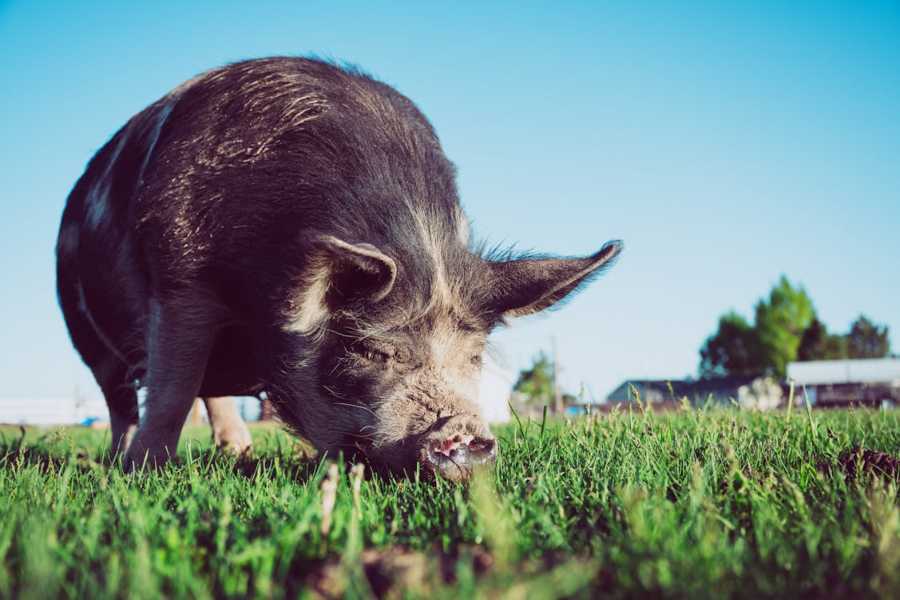The question “when was the first animal cruelty law passed” takes us on a journey through human morality, compassion, and legislation. For centuries, animals were viewed only as property or labor, with little thought to their suffering. But social reformers, philosophers, and lawmakers slowly began to recognize that unnecessary cruelty toward animals was not just morally wrong but damaging to society.
The earliest known statute protecting animals dates back to 1635 in Ireland, where a law prohibited pulling wool off living sheep and banned plowing horses by the tail. This was groundbreaking, though still limited in scope. Later, in 1822, Britain passed the famous Martin’s Act, widely recognized as the first modern law against animal cruelty, protecting cattle, horses, and sheep from mistreatment.
In the United States, New York became the first state to enact anti-cruelty legislation in 1828, and the formation of the ASPCA in 1866 strengthened enforcement. These laws laid the foundation for animal protection worldwide, influencing Europe, colonial territories, and eventually global treaties.
when was the first animal cruelty law passed? depends on context. The earliest was in 1635 Ireland, prohibiting wool-pulling from live sheep and banning tail-plowing. However, the first widely recognized modern law was Martin’s Act in England (1822), protecting cattle. Both marked turning points, inspiring global reforms and the birth of groups like the RSPCA and ASPCA.
The First Animal Cruelty Law Passed in History and Its Global Impact
This law reflected a growing recognition of cruelty as unnecessary suffering. Yet, animals were still largely seen as property, valued for their labor, meat, and materials. Enforcement was rare, and the broader public did not view animal welfare as a pressing concern. Still, the Irish law set a legal precedent, sparking questions about human responsibility toward animals.
Fast-forward nearly two centuries, and Britain became the true pioneer. In 1822, Parliament passed what is often referred to as the first modern animal welfare law, known as Martin’s Act. Introduced by Richard “Humanity Dick” Martin, this act specifically targeted the mistreatment of cattle, horses, and sheep. Its success marked a cultural and legal turning point, making England the leader in animal protection legislation.
Martin’s Act was mocked at first, but Martin’s persistence in prosecuting abusers proved the law’s worth. In 1824, just two years later, Martin and other reformers founded the Society for the Prevention of Cruelty to Animals (SPCA), which later became the RSPCA. This institution became the model for animal welfare organizations around the globe.
The United States soon followed. In 1828, New York passed one of the earliest American anti-cruelty laws, influenced by British reform. By the mid-19th century, other states adopted similar statutes. When the ASPCA was founded in 1866 by Henry Bergh, enforcement of animal protection reached new strength.
The Fight for the First Animal Cruelty Law
The origins of animal cruelty legislation were shaped by religion, ethics, and Enlightenment thought, leading reformers like Richard Martin to push for lasting change.
Religious and Ethical Motivations
Understanding the roots of early animal cruelty legislation requires examining religious and moral contexts. Many reformers of the time believed that animals, as God’s creations, were worthy of compassion and protection from suffering. Protecting them was seen not only as a social responsibility but also as a spiritual duty tied to broader ethical values.
Enlightenment Influence
The Age of Enlightenment reshaped thinking about human responsibility. Philosophers argued that cruelty to animals desensitized humans and damaged society. This belief directly inspired reformers like Richard Martin, and it shows how random debates—sometimes as unusual as choosing the Most Random Word in philosophical discussions—could lead to profound societal change.
Martin’s Parliamentary Struggle
Richard Martin fought hard in Parliament. He argued that cattle and horses suffered unnecessarily in markets, slaughterhouses, and during transportation. His persistence led to the 1822 Act, which passed despite ridicule from many lawmakers.
Early Enforcement and Mockery
Enforcing Martin’s Act was challenging. Martin himself prosecuted offenders, earning the nickname “Humanity Dick.” Though mocked, his work demonstrated that laws could restrain cruelty effectively.
Public Reaction and Expansion
As prosecutions gained publicity, the public began to support reform. Within decades, protections expanded to cover more species, and animal welfare became a recognized legal principle.
Global History Timeline of Animal Cruelty Laws
Animal cruelty laws have a long and evolving history, beginning centuries ago and shaping today’s global animal welfare standards. This timeline highlights the key milestones that paved the way.
- 1635 – Ireland: First statute protecting sheep and horses.
- 1822 – England: Martin’s Act passed, focusing on cattle.
- 1824 – SPCA Founded: Later became the RSPCA, expanding protection efforts.
- 1828 – U.S. (New York): One of the first American statutes.
- 1866 – ASPCA Established: Henry Bergh’s activism professionalized animal protection in America.
- Late 19th Century: European nations like France and Germany passed their own anti-cruelty laws.
- 20th Century: Laws expanded to include laboratory testing, circuses, wildlife, and companion animals.
- 21st Century: Stronger bans on fur, puppy mills, and factory farming practices in many countries.
How the First Animal Cruelty Law Shaped Society
The passage of Martin’s Act in 1822 was far more than a simple legal measure—it was a turning point in human culture and society. Before this moment, cruelty toward animals such as horses, dogs, and cattle was commonplace and largely accepted as part of daily life. Farmers, traders, and ordinary citizens often viewed animals strictly as property, and harsh treatment was rarely questioned. With the introduction of the first anti-cruelty law, however, society was forced to reconsider its relationship with animals and acknowledge a duty of care that had never been formally recognized before.
This law changed the way cruelty was perceived by transforming it from a private matter into a public offense. No longer could abuse be dismissed as personal choice or routine behavior; instead, it became a crime with social and legal consequences. Public markets began regulating the treatment of livestock, while slaughterhouses slowly introduced more controlled and comparatively humane practices. Even pet ownership took on new meaning, as individuals came to understand that caring for a companion animal involved responsibility as well as companionship.
Over time, public opinion started to shift. While the transformation did not happen overnight, the law created a foundation for viewing animals as beings capable of suffering rather than simply tools for labor or profit. This cultural shift gained strength as enforcement measures became more visible and the principle of compassion spread throughout communities.
The establishment of the SPCA in 1824 amplified the law’s reach and impact. Inspectors monitored markets, schools began teaching lessons on kindness toward animals, and public campaigns raised awareness. These efforts inspired the creation of similar organizations around the world, showing how one statute could spark systemic change. The legacy of Martin’s Act is not only in protecting animals but also in reshaping human values toward empathy and responsibility.
Worldwide History of Animal Protection Laws
Animal welfare laws, first rooted in Europe, gradually spread worldwide—shaping protections in the U.S., colonial territories, and modern international frameworks.
Europe Beyond Britain
France, Germany, and Switzerland passed laws in the mid-19th century, influenced by Martin’s Act.
United States Expansion
After the 1828 New York statute and the ASPCA’s founding, nearly every U.S. state had laws by the late 19th century.
Colonial Territories
British colonies like India, Canada, and Australia adopted similar frameworks, spreading animal welfare globally.
20th Century International Progress
Global treaties and organizations like the League of Nations later emphasized animal welfare as part of human rights and environmental laws.
Modern Frameworks
Today, the EU enforces strong protections, while countries like the U.S. maintain federal and state-level statutes. However, enforcement challenges remain.
Conclusion
The history of early animal protection laws shows how modest beginnings led to sweeping cultural change. Ireland’s 1635 statute and England’s Martin’s Act of 1822 were not just isolated reforms—they challenged long-held norms that accepted cruelty as ordinary. These early steps introduced the revolutionary idea that humans bore a responsibility to prevent suffering, laying the groundwork for a more compassionate society.
From Britain and Ireland, the influence spread to the United States, continental Europe, and eventually across the globe. Each new law built upon earlier efforts, expanding protections from livestock to pets, wildlife, and animals in research. Today’s animal welfare standards, though still uneven, trace their roots back to these pioneering statutes that reshaped both law and human values.
FAQ’s
What was the first anti-cruelty law in England?
It was Martin’s Act of 1822, widely considered the first modern law that targeted the mistreatment of animals, specifically cattle.
What was the earliest animal protection law in the United States?
New York enacted one in 1828, and other states soon followed with similar measures to safeguard animals.
Why is Martin’s Act considered so significant?
Because it was the first widely recognized legislation that criminalized cruelty to animals, laying the foundation for the creation of the SPCA in 1824.
Do all nations have laws against animal cruelty today?
Most do, but the scope and enforcement differ. Some countries mainly regulate livestock, while others also protect pets, wildlife, and animals used in testing.
How did early legislation influence current debates?
By establishing the principle that animal suffering has legal and moral weight, these laws shaped modern discussions on issues like industrial farming, fur bans, and animal rights.




